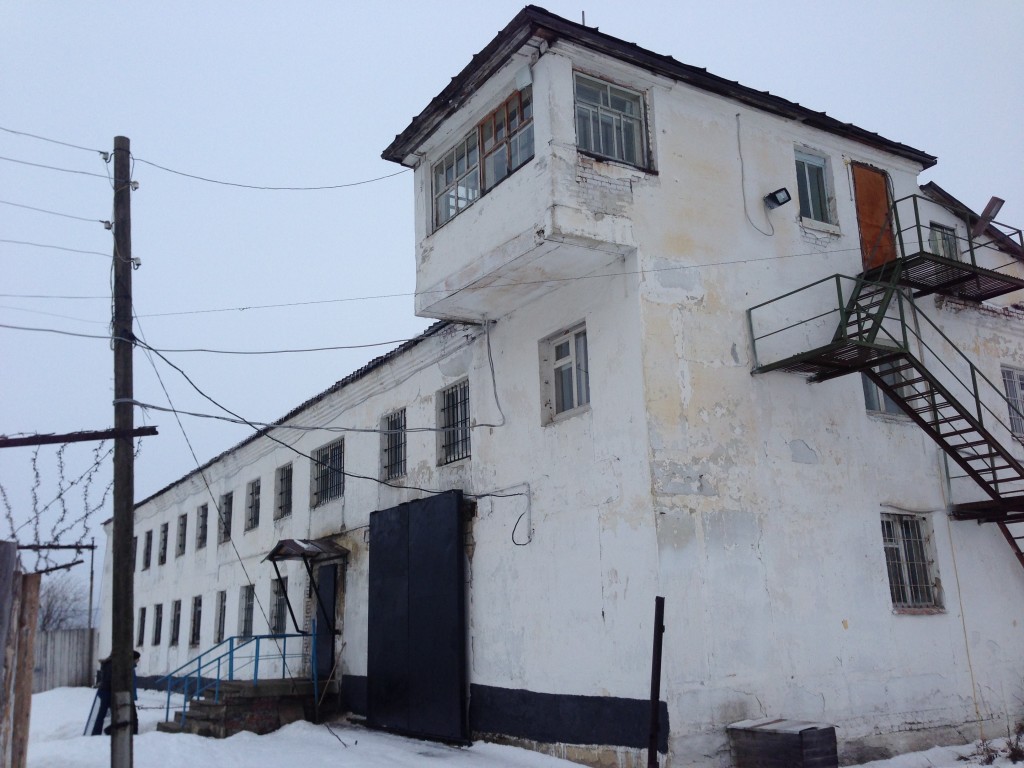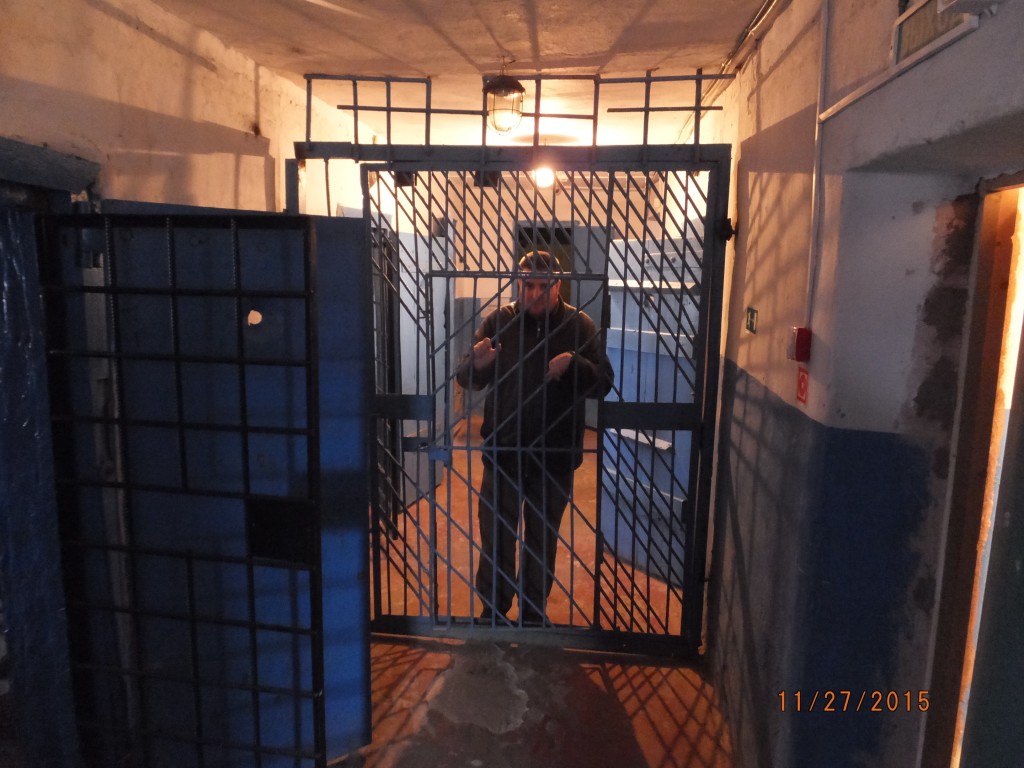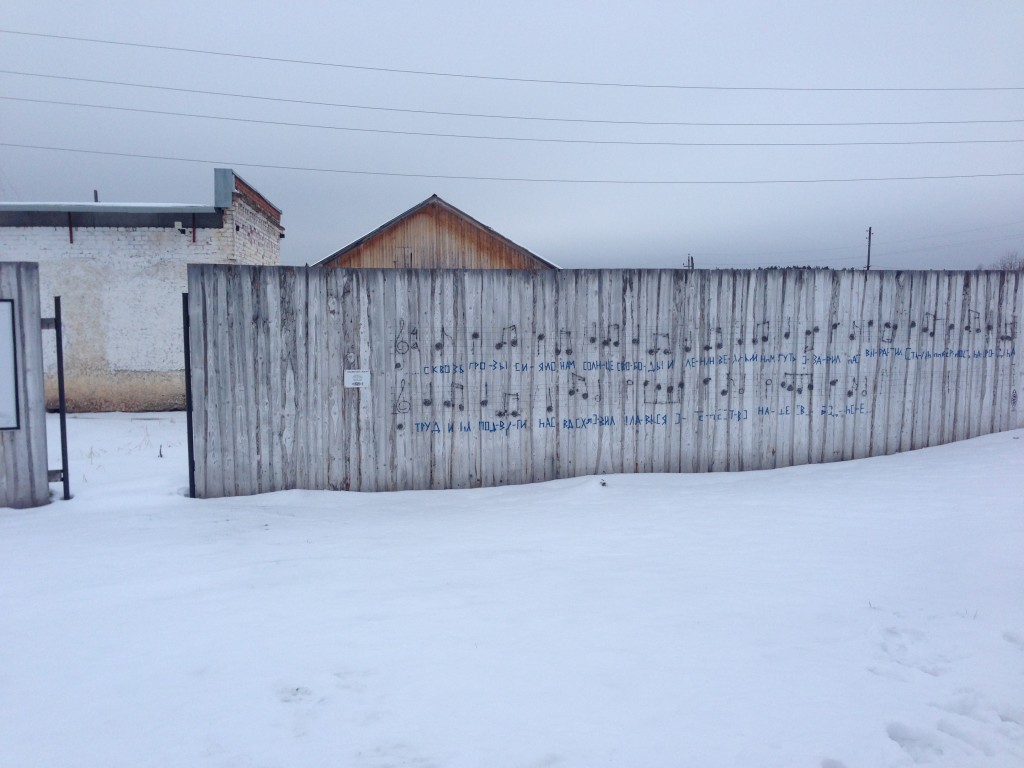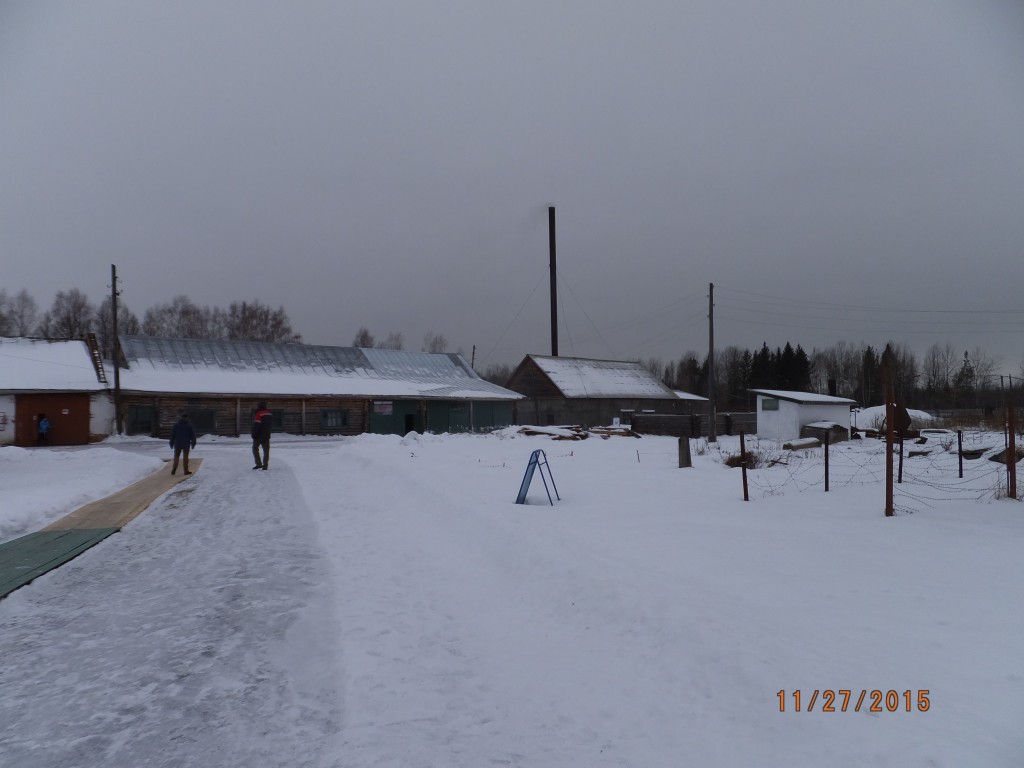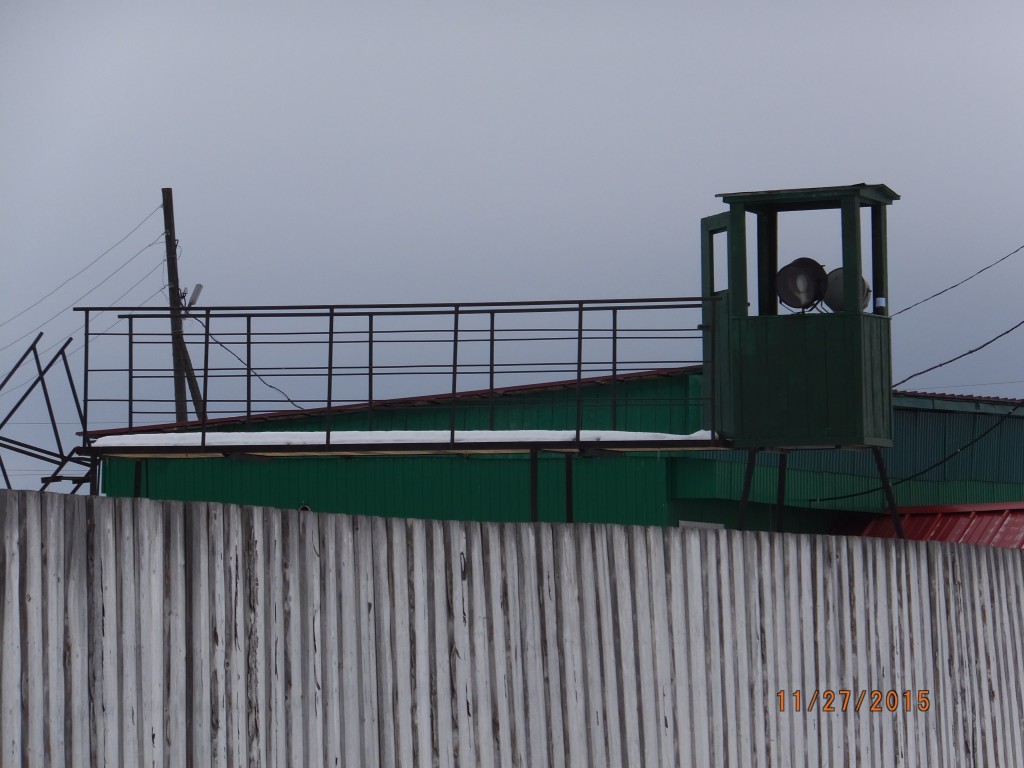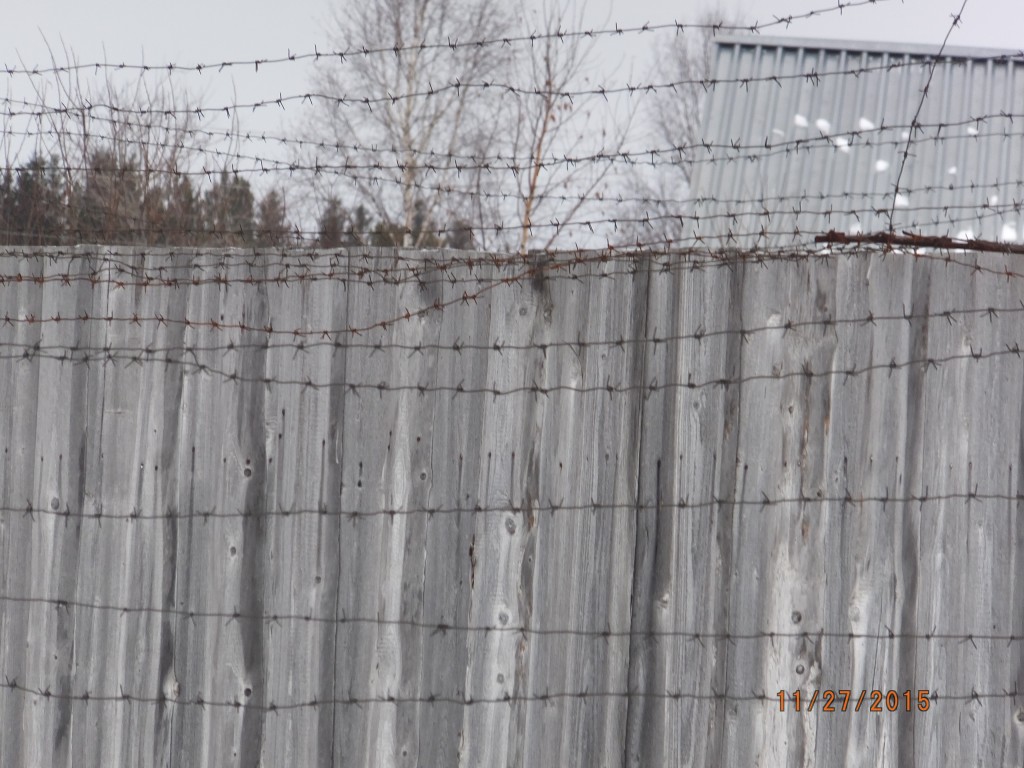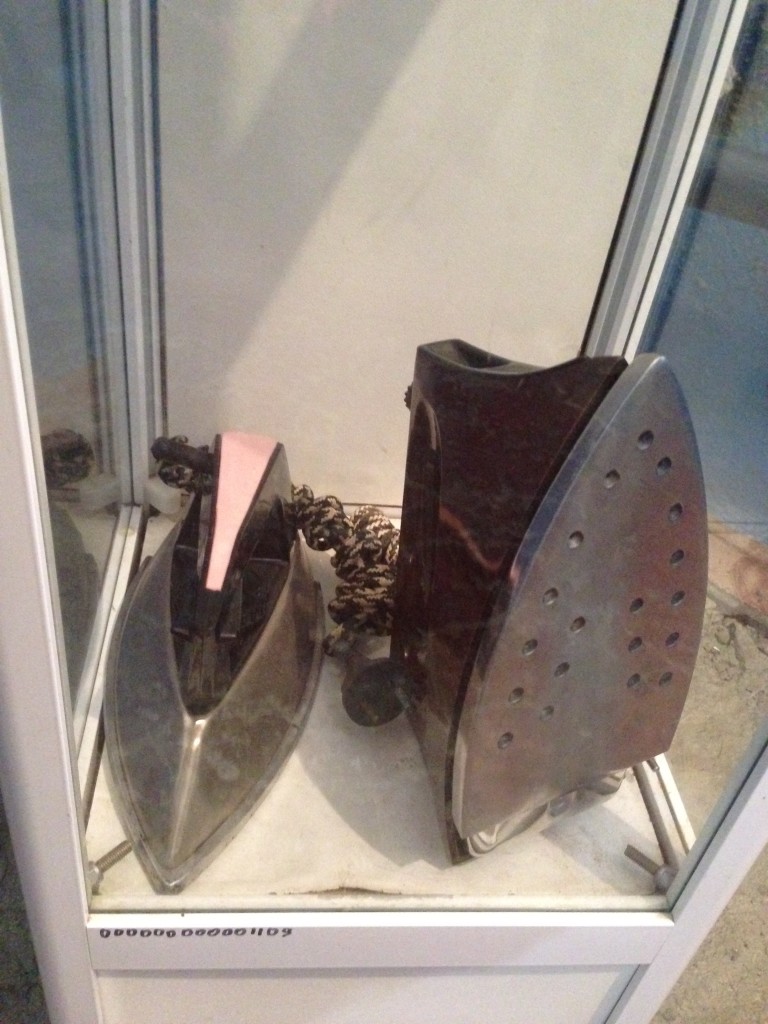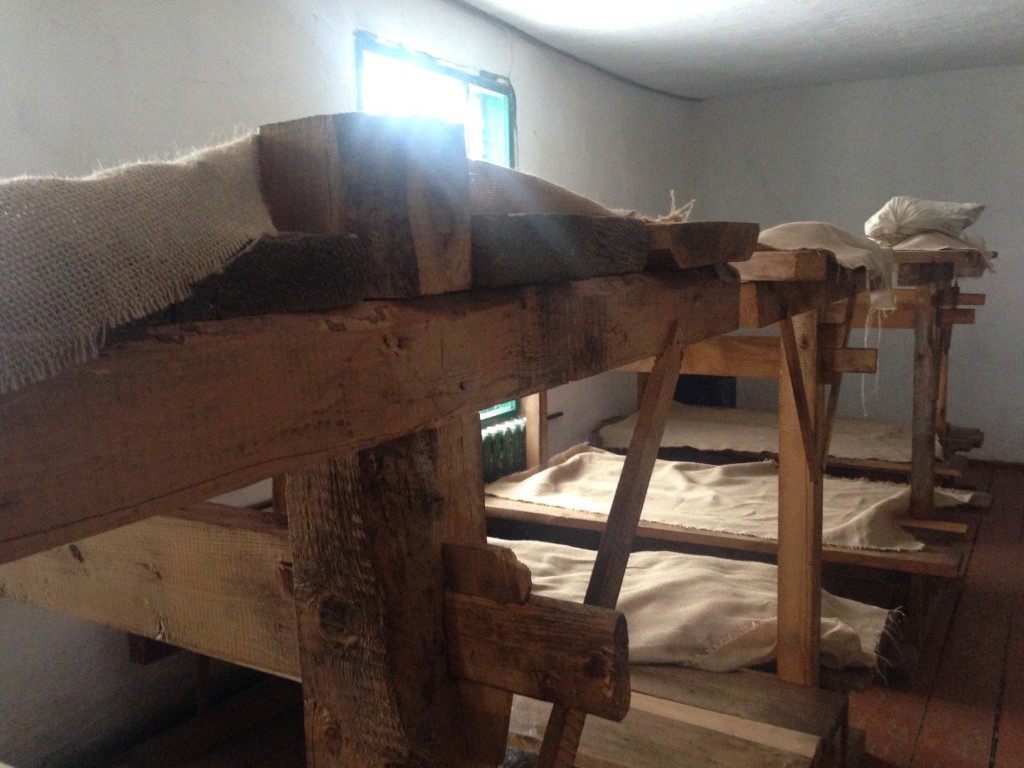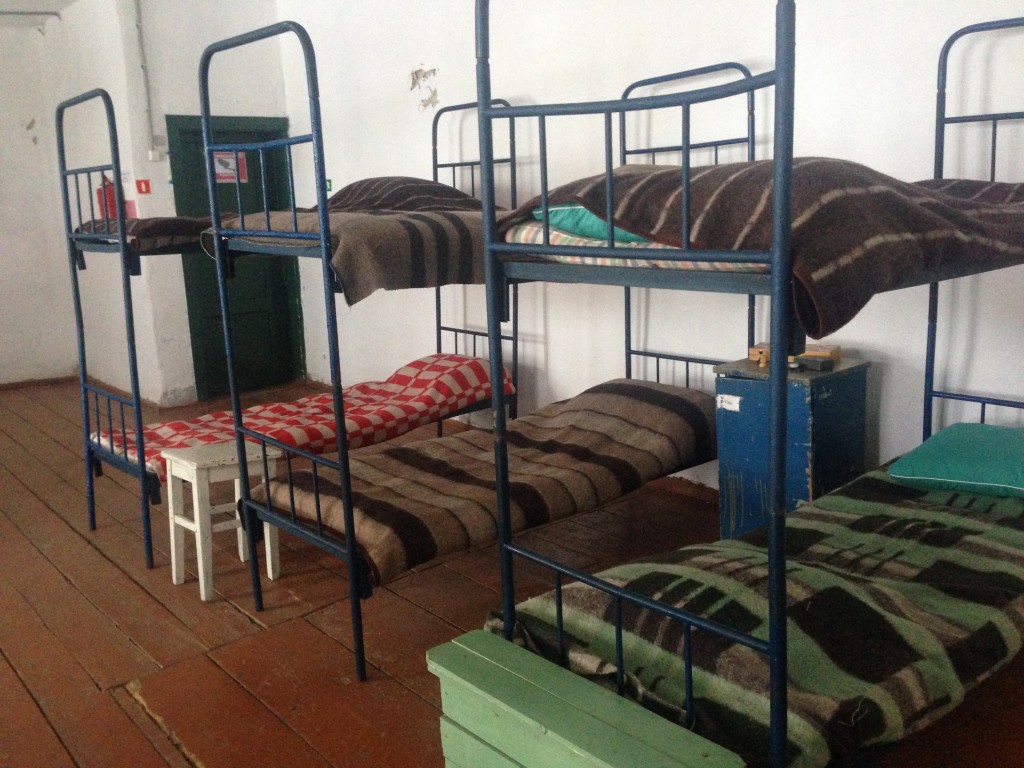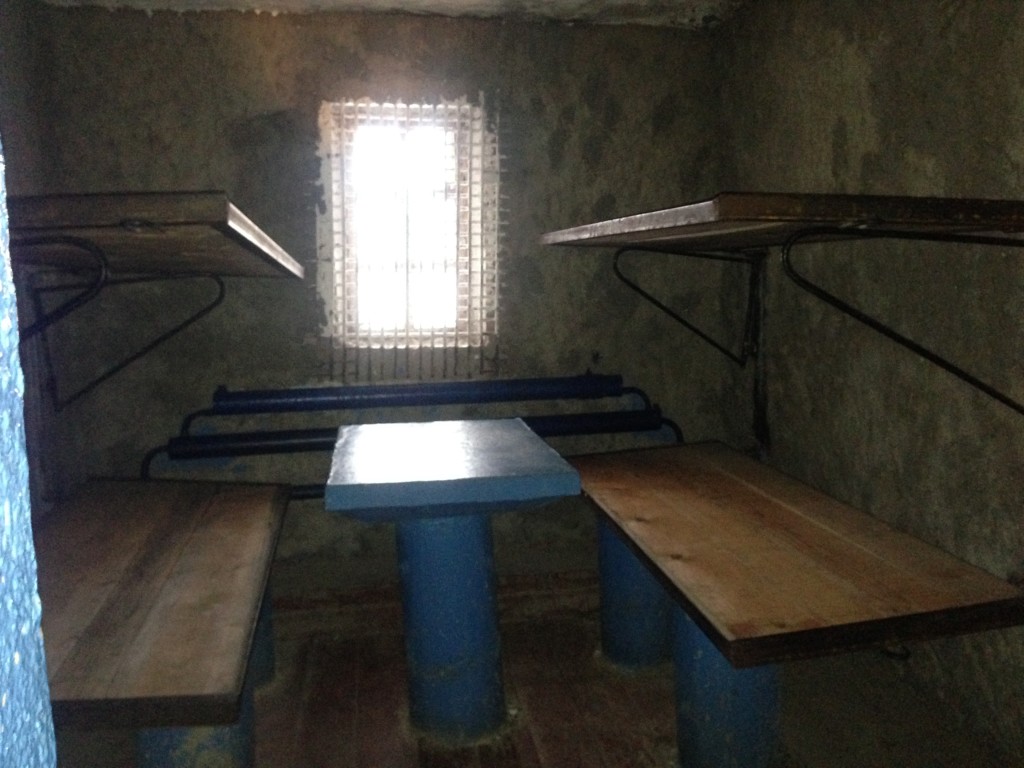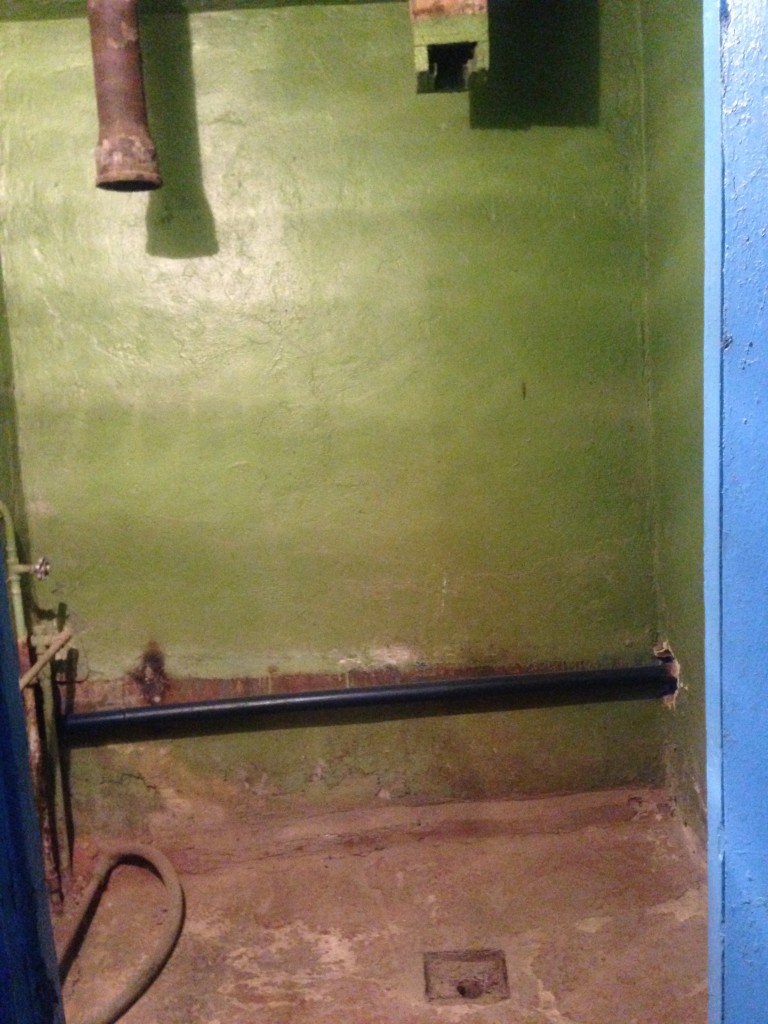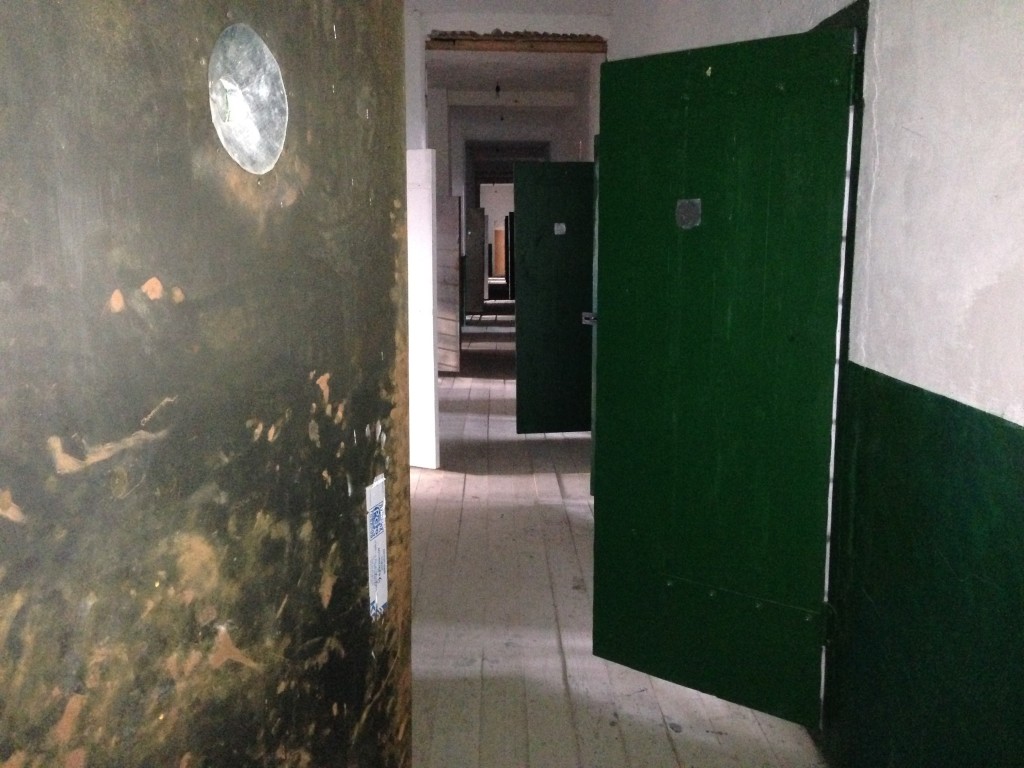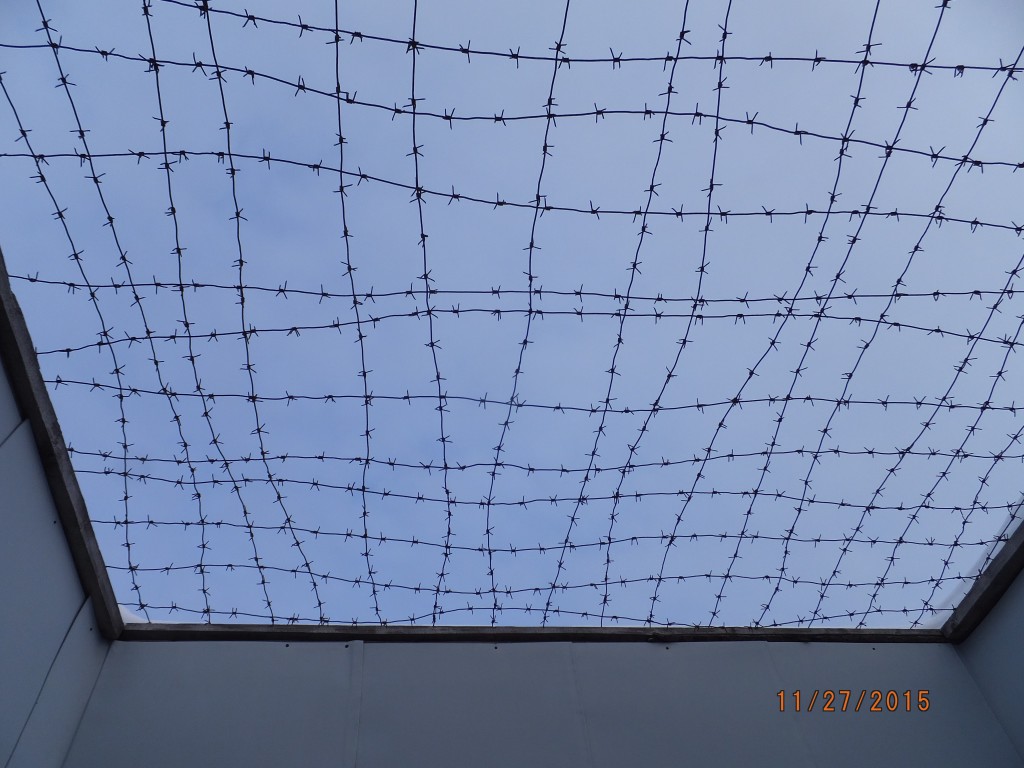Perm 36, known as the Memorial Center of Political Repression, is a former forced labor camp located near Perm, Russia. This camp was part of the system of prisons during the time of the Soviet Union, which we commonly refer to as Gulags. Perm 36 started as a common camp, a low level Gulag. Soon after, it was converted to harsher camp for police officers and military personnel. Later, from about the 1970’s until its closure in the late 1980’s, it was used for political prisoners. A special regime section, one of the most severe levels of Gulag, was also added for “enemies of state.” It is the only forced labor camp preserved as a museum today in the former Soviet Union.
Old lyrics to Russia’s national anthem located near the main entrance of the camp.
The entire area is enclosed in a fence. Not just any fence, but a multi-layer one. The exterior fence is a wood fence, followed by a high barbed-wire fence. In between this area is known as “broken land.” Basically, this area was designed to “break” if anyone stepped it, which signaled the guards someone had made it to this section. The next section was a wooden fence with a barbed-wire trap lining its top. Between this fence and the previous section was the dog gallery, an area guarded by mean dogs. The next fence was an additional barbed-wire fence that was connected to motion detectors. If someone touched this fence, the guards would immediately be signaled. One more fence follows, an electric one. This too would immediately send a signal to the guards if tripped. For good measure, this also featured “broken land” and was surrounded by guard towers. This is the image that will forever stick in my mind. I doubt a hybrid of Houdini and MacGyver could have slipped through.
The camp included an electric plant, a boiler building, a warehouse and other workshops. One of the products manufactured here by the forced labor were electric irons for clothing. Throughout the day, prisoners were subjected to searches to ensure they were not concealing tools or other items from the labor portion of camp. The housing portion originally included bunk beds of flat wood, no mattresses. Later, more comfortable bedding furniture was added. Prisoners were entitled to one shower a week. However, there was a cinema in the main hall, used about once a month. These conditions are a bit better than other gulags due to its one time population of police officers and military personnel. However, the punishment barracks was awful. Food rations would be more limited, showers less frequent, sleeping conditions worsened, and one rarely went outside because the workshop was next to the punishment cell.
The workshops and other buildings.
Guard tower
Parts For Electric Irons
Electric Irons
Original Beds
Newer, more comfortable beds.
Punishment Barracks
Toilet in Punishment Barracks
Shower in Punishment Barracks
The special regime part was smaller, composed primarily of a main building. On one side were jail cells and opposite were workshops. A prisoner here was only entitled to forty minutes outside, in a tiny, enclosed area. The only view was of the sky interrupted by harsh lines of barbed wire and the face of a guard towering above. When a guard came to check your cell, one was required to be facing backwards to the door, bent over while reciting how awful your crimes were. This was to prevent the guards from gaining any sympathy.
Special Regime Barracks
“Walking” Gallery for Special Regime prisoners…
It startled me to learn that the special regime area was added in the 1980’s. I had thought this system of Gulags had become less common after the death of Stalin. There were about 175 guards watching over approximately 250 prisoners, a proportion I felt was quite high. I cannot imagine the stench of prisoners given their infrequent access to showers. The plumbing did not look sophisticated either. This is all compounded long, cold, dark winters.
However, it was the image of the multi-layer fence that really told the story; if a fence like that is needed, it becomes obvious how grueling the conditions must have been.
I want to give special thanks to Evrasia Travel Agency and my guide Alexander who helped make my trip to Perm 36 a success. My entire visit to Perm was chosen based on visiting Perm 36. Given the location of Perm 36 in relation to the city of Perm, I am not confident I could have managed the visit to myself. Transportation was provided from and back to my hotel. Also, Alexander provided clear, easy to understand translations, giving my visit significantly more meaning and value. Alexander is very knowledgeable about the region in general and was a great person to spend the day with. I would use their services on future visits to this region.
// Oliver – Day 75 – Russia

